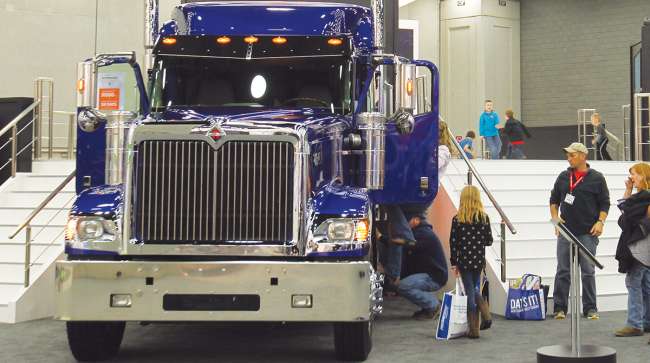Features Coordinator
Clean Diesel Trucks More Prominent in Nation’s Fleet, Study Shows

More clean diesel trucks are a part of the nation’s fleet, escalating over the past five years, which subsequently yielded lower emissions and greater fuel savings, new research shows.
The Diesel Technology Forum said clean diesel truck engines now are 30%, up from 25.7%.
“Over a five-year period, the newest-generation commercial vehicles have saved 4.2 billion gallons of diesel fuel and reduced 43 million tonnes of carbon dioxide, 21 million tonnes of nitrogen oxides and 1.2 million tonnes of particulate matter,” Diesel Technology Forum Executive Director Allen Schaeffer said.
The nonprofit organization, which raises awareness of diesel engines, fuel and technology, conducted its research based on data provided by information and analytics company IHS Markit.
IHS used data from almost 3 million Classes 3-8 vehicles in operation from model year 2011 through 2016 in each state and the District of Columbia through Dec. 31, 2016.
Indiana leads with 51% of its trucks in operation having clean diesel engines. Utah and Oklahoma follow, each with a 42% clean diesel participation rate.
Several factors contribute to the success of clean diesel trucks in these states.
In Indiana, funding and industry shifts fueled the high percentage. “Last year, a lot of trucks were replaced, and they would have been replaced with that clean diesel technology,” said Kellie Walsh, executive director for the Indianapolis Air Pollution Control Board.
“There were some Diesel Emission Reduction Act funding that was available through our Department of Environmental Management, which is a part of the EPA’s funding mechanism for clean diesel improvements,” Walsh added.
Schaeffer said some states cultivate a platform for clean diesel more than others.
He said that they have a more hospitable business climate for the trucking industry in the form of lower vehicle registration fees and taxes, and reduced operation and residence costs, translating into higher participation.
All new truck engines are equipped with technology that is categorized as clean diesel.
The Environmental and Protection Agency set standards requiring all diesel engines manufactured after 2010 be equipped with technology that limited the amount of nitrogen oxide (NOx) emissions to no more than 0.20 grams per brake horsepower hour.
“2010 was an important milestone in that it forced manufacturers to produce engines that achieved near-zero emissions for [Nitrogen] oxide, a precursor to ozone formation,” Schaeffer said.
Further reduction technology for diesel engine pollutants are being designed and implemented annually.
“You’ve got your diesel oxidation catalyst, diesel particulate filters and, recently added, you’ve got the urea added to help further reduce the pollutants in the tailpipe,” Walsh said.
Still, the future of diesel looks strong, according to Schaeffer.
“Diesel will continue to be the workhorse,” he said. There are about 13 million Classes 3-8 vehicles in operation, and about 9.8 million are diesel IHS reports.
Clean diesel also can give companies an edge when marketing themselves to environmentally conscious shippers.
“Fleets look to offer a greener platform of their delivery abilities to their shippers,” Walsh said. “They are becoming a lot more aware that it can affect their bottom line to replace their older, less environmentally friendly vehicles with newer diesel technologies.”

